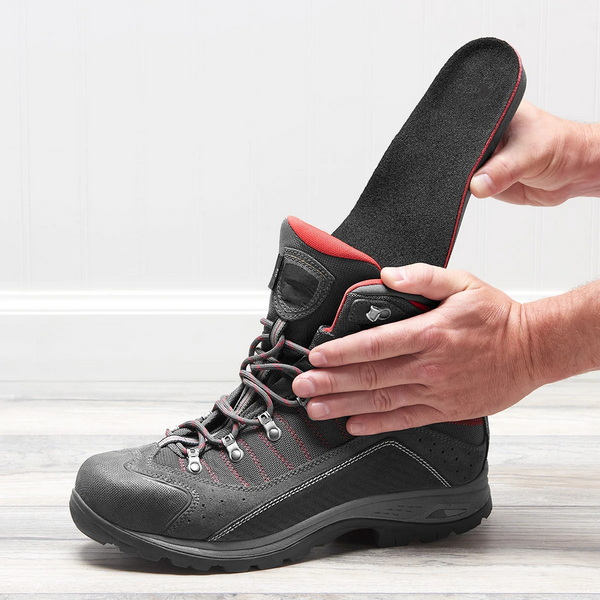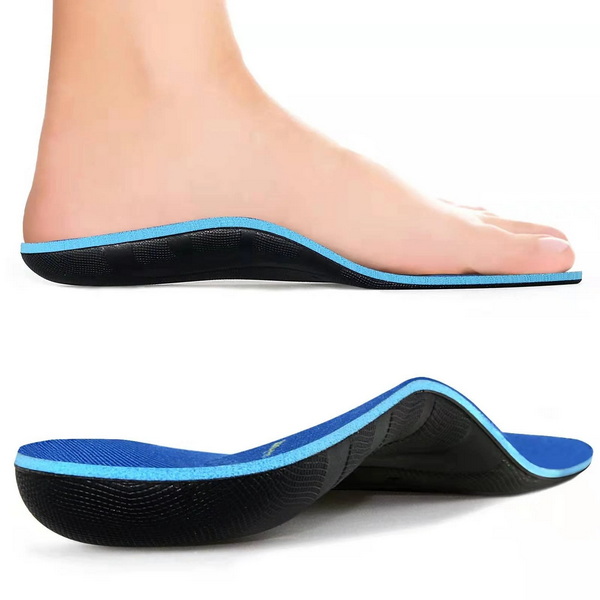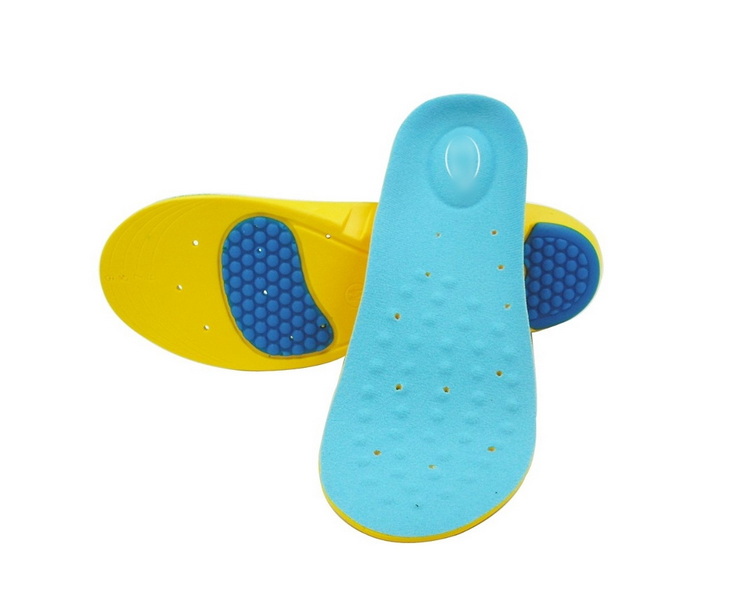Views: 222 Author: Edvo Publish Time: 2025-10-25 Origin: Site











Content Menu
● Understanding Heated Insoles Technology
>> Key Components of Heated Insoles
● The Design And Purpose Of Sharper Image Heated Insoles
● Are Sharper Image Heated Insoles Suitable For Hiking?
● Real-life Performance During Hiking Adventures
>> Weight and Ergonomic Support
● How To Use Heated Insoles Comfortably When Hiking
● Advanced OEM Heated Insoles: The Professional Option
>> Core Features Of Custom OEM Heated Insoles
● Manufacturing Strengths of Chinese OEM Heated Insole Suppliers
>> Key Manufacturing Advantages
● User Reviews and Field Impressions
● Maintenance and Longevity Tips
● Environmental Considerations
● Why OEM Heated Insoles Benefit Brands and Consumers
● Purchasing Guide: Choosing the Right Heated Insoles for Hiking
● FAQs About Heated Insoles for Hiking
>> 1. Are Sharper Image Heated Insoles waterproof?
>> 2. How long does the heat last while hiking?
>> 3. Can heated insoles affect my boot's fit?
>> 4. Are heated insoles safe for long-term use?
>> 5. How can I customize heated insoles for my brand?
Hiking takes more than enthusiasm—it requires preparation, the right footwear, and items that can protect your body from environmental stress. When temperatures drop, foot comfort becomes one of the biggest challenges for hikers. Sharper Image Heated Insoles have become a popular pick among those seeking warmth and convenience during cold endurance treks. But can you really wear them to hike in, and are they suitable for serious outdoor adventures?
This article explores the performance, features, and limitations of Sharper Image Heated Insoles and offers professional insights from a leading Chinese OEM insole manufacturer that specializes in designing advanced heated insoles for hiking and outdoor brands.

Heated insoles are battery-powered inserts placed inside shoes or boots to deliver controlled heat across the footbed. They help prevent numbness, frostbite, and discomfort during cold-weather activities. The technology has evolved rapidly—modern insoles feature improved energy efficiency, lightweight materials, and enhanced battery protection.
- Heating Layer: Usually made with thin carbon fiber or conductive wires that distribute warmth uniformly.
- Rechargeable Battery Module: Compact lithium-ion cell providing hours of continuous heating.
- Thermal Insulation: Keeps heat near the foot while wicking away moisture.
- Temperature Regulator: Allows manual or Bluetooth-based adjustment for personalized heat levels.
- EVA or Memory Foam Base: Offers cushion and ergonomic support for long wear.
These advancements have expanded the usability of heated insoles beyond leisure activities. Many outdoor professionals and athletes now rely on them to maintain circulation and endurance in freezing conditions.
Sharper Image Heated Insoles are designed for casual to moderate outdoor users who prioritize warmth and convenience. Their key strength lies in simplicity—they fit most footwear types and are easy to operate. Heating typically covers the toe and midfoot area, combating the chill that starts at the extremities.
- Wireless control system for temperature settings.
- Energy-efficient heating element reduces battery waste.
- Light, streamlined design that fits snugly into standard walking or hiking boots.
- Rechargeable via USB cable, eliminating replacement batteries.
While these features are ideal for urban commutes and light hikes, demanding outdoor environments require higher durability and power. That's where professional-grade and OEM-made heated insoles take the advantage further.
Yes, they can be used for hiking—but only under certain conditions. They perform well for casual or medium-length hikes in dry and moderately cold environments. However, extended exposure to snow, steep climbs, or heavy trails may push their design beyond intended limits.
- Retains warmth for several continuous hours.
- Enhances blood circulation and reduces stiffness.
- Slows the onset of cold-induced fatigue during rest periods.
- Battery life may run out on extended routes.
- Limited waterproofing against deep snow or puddles.
- Heating primarily targets the front of the foot, not the heel.
- Cushioning may feel thin under heavy load-bearing hiking conditions.
Thus, while Sharper Image Heated Insoles offer short-term warmth and basic comfort, professional hikers might prefer advanced OEM or custom models with waterproof sealing, advanced cushioning, and extended power capacity.
When tested in variable terrain—from forest paths to open mountain trails—the results reveal the insoles' advantages and restrictions.
On medium settings, Sharper Image Heated Insoles provide warmth for approximately 5–6 hours. For half-day hikes or accessible mountain trails, that's sufficient. But when temperature drops below freezing or the hike exceeds eight hours, users often rely on power banks to recharge batteries.
The insoles are designed with limited water protection. Light moisture or shallow puddles will not harm them, but prolonged snow contact or full submersion should be avoided. OEM manufacturers now often integrate waterproof membranes or sealed interior circuits to counter this issue for professional-grade insoles.
Comfort largely depends on proper fit. The insoles are soft and adjustable, but may slightly elevate foot height in snug boots. Long-distance hikers benefit from insoles with dual-density foam support, customized shaping, and breathable mesh layers—something available through custom OEM manufacturing.
Sharper Image Heated Insoles maintain a lightweight design, often below 150 grams per pair. This makes them easy to use for recreational hiking. However, for extended trekking, even slight extra weight can accumulate fatigue. A balanced insole design considering foot biomechanics and stability is vital for professional equipment.
Hiking with heated insoles requires strategy to maximize comfort, efficiency, and safety.
1. Pre-heat Before Departure: Activate warming mode 10 minutes before putting on boots for even heat distribution.
2. Keep Battery Warm: Store the battery module close to body warmth in colder conditions for longer performance.
3. Mid-hike Check: Turn off for 15–20 minutes if feet overheat; this conserves power.
4. Layer Up Wisely: Combine the insoles with breathable, moisture-wicking hiking socks.
5. Maintain Dry Interior: After each use, remove and air-dry the insoles fully to prevent bacterial growth.
Experienced outdoor guides emphasize temperature moderation—the goal is comfortable warmth, not excess heat, which can lead to sweating and discomfort.
As a leading Chinese manufacturer, our company produces advanced thermal insole solutions built for professional-grade hiking, mountaineering, and industrial use. Unlike standard market models, OEM heated insoles are built with superior components, adjustable systems, and tailored ergonomics.
- Full-foot carbon fiber heating mesh covering toes, midfoot, and heel.
- Rechargeable lithium-polymer batteries with 8–10 hour duration.
- IPX6 waterproof design for snow or water conditions.
- Temperature control via remote or mobile application.
- Durable EVA/PU combination foam for lasting cushioning support.
- Smart heat sensors that automatically adjust warmth according to environment changes.
OEM insoles can be branded, designed, and packaged according to customer specifications, helping international brands develop customized product lines for their hikers and outdoor consumers.

China has become a global hub for insole manufacturing innovation, combining advanced R&D and cost-effective production. Our manufacturing process emphasizes both performance testing and safety certification to meet outdoor wear and CE/UL compliance.
- Integrated design laboratories and engineering centers.
- Stringent temperature endurance and battery safety tests.
- Support for small and large OEM orders with flexible lead times.
- Mature logistics network for worldwide delivery.
- Multiple material options—EVA, memory foam, breathable mesh, and graphene.
This manufacturing infrastructure enables scalable production suited for seasonal outdoor equipment markets in North America, Europe, and Asia.
Users who have tested the Sharper Image Heated Insoles in moderate hiking environments report consistent comfort in cool to cold weather. The majority appreciate the user-friendly control design and sleek fitting. Some users, however, notice uneven warmth when hiking in extreme cold for long periods.
For avid mountaineers and professional hikers, OEM models that feature extended wire mesh heating and more sophisticated cushioning systems outperform mainstream consumer models.
Feedback also suggests improved satisfaction with insoles offering removable batteries for easy replacement—another field-driven design feature widely adopted by professional OEM manufacturers.
Consistent maintenance ensures your heated insoles deliver long-lasting performance and safety.
- Do not fully submerge: Gently wipe with a damp cloth, avoiding direct water contact.
- Recharge monthly: Even when not in use, keeping the battery active preserves capacity.
- Store in dry, cool space: Avoid leaving units in extreme temperatures.
- Inspect connections: Loose wires or heating inconsistencies should be repaired promptly.
- Replace every season: For heavy hikers, replacing insoles every year maintains optimal comfort and function.
Taking care of both heating and structural layers will extend the lifespan significantly.
Modern outdoor enthusiasts value not only performance but sustainability. High-quality OEM heated insoles can incorporate eco-friendly design features such as recyclable foam, energy-efficient circuitry, and long-lasting rechargeable cells. These contribute to reducing waste generated by disposable warming solutions.
As Chinese producers, we focus on lowering emissions in production lines, using renewable energy sources, and maintaining compliance with environmental safety standards.
For international footwear or outdoor equipment brands, partnering with an experienced OEM manufacturer ensures complete control over product specifications, materials, and design. It also allows for innovation—features such as temperature sensors, fast-charging batteries, and ergonomic foot mapping can be tailored to brand identity and market demand.
For consumers, this partnership means access to more reliable, comfortable, and personalized heated insoles built for hiking, skiing, and other challenging outdoor conditions.
Whether you prefer off-the-shelf models like Sharper Image Heated Insoles or professional OEM products, consider the following factors before purchase:
- Battery Runtime: Choose at least 6–10 hours for long hikes.
- Fit and Flexibility: Trim-to-fit models should not compromise cushioning.
- Waterproof Level: Important for snow or wet terrain.
- Material Quality: EVA and memory foam offer ideal comfort-to-weight ratio.
- Heating Range: Full-coverage heating enhances warmth distribution.
- Customization Options: OEM solutions offer design freedom for brands or bulk buyers.
Selecting an insole based on terrain conditions and hike duration ensures you experience maximum benefit without performance limitations.
So, can you wear Sharper Image Heated Insoles to hike in?
Yes, they are suitable for light to moderate hikes and cold-weather outdoor activities. They provide effective warmth, easy recharging, and moderate comfort. Yet, hikers tackling rugged or long expeditions will find OEM-manufactured models more dependable due to better waterproofing, sophisticated cushioning, and extended heating performance.
As a trusted Chinese OEM heated insole manufacturer, we help brands and distributors deliver world-class comfort and durability for outdoor consumers globally. Whether you aim to enhance your hiking experience or expand your product line, advanced heated insole technology brings warmth and innovation straight to your steps.

They are water-resistant but not fully waterproof. For extreme wet hiking conditions, select fully waterproof OEM versions with sealed circuits.
Typically, 5–6 hours on medium settings. Premium OEM models can reach up to 10 hours or more.
No, most are designed to trim and fit standard boot sizes. OEM hiking insoles can be custom-shaped for maximum snugness.
Yes, with proper care and inspection. Avoid using them when wet or during charging for safety reasons.
Through our OEM service, brands can specify materials, battery size, heat range, and packaging to create personalized hiking-optimized heated insoles.